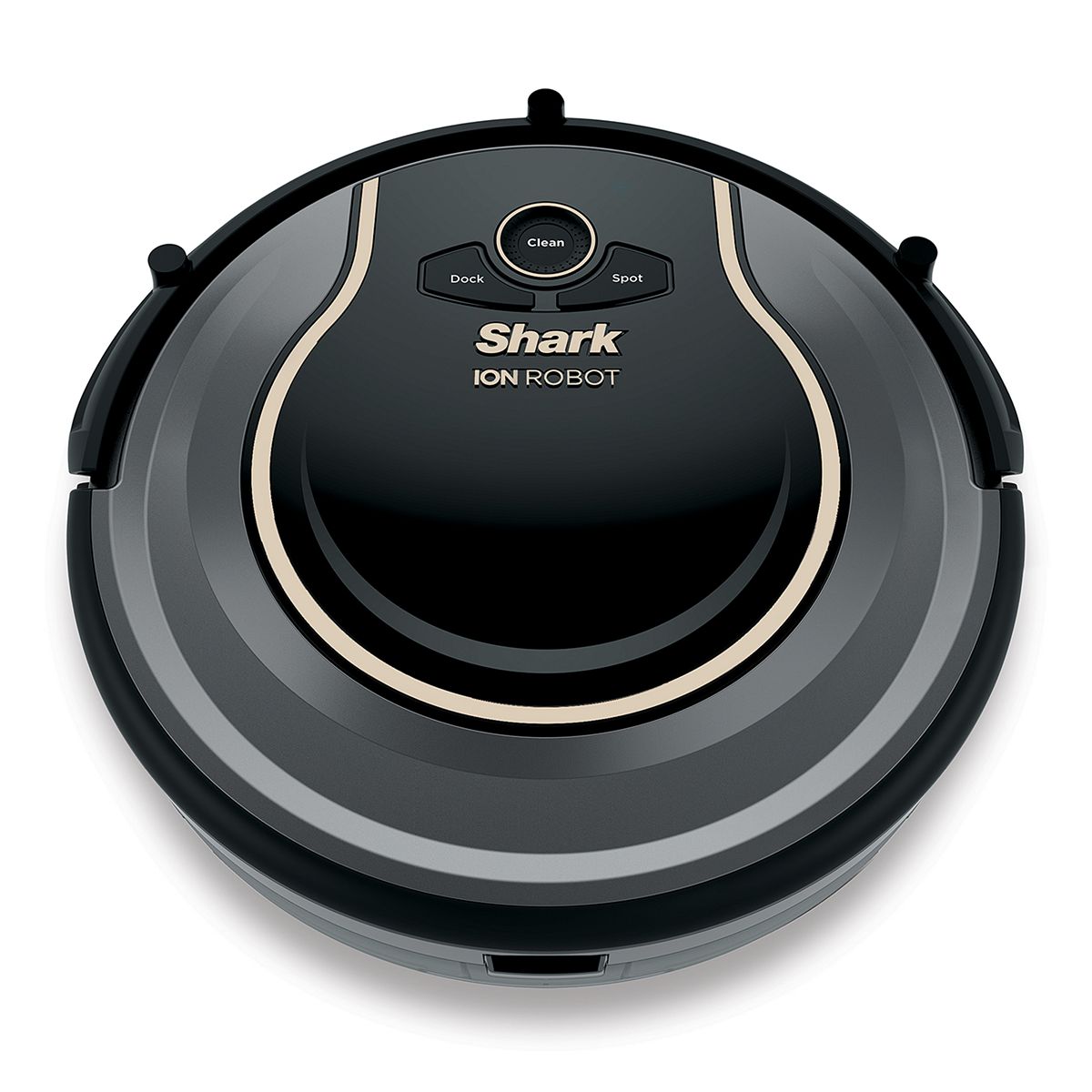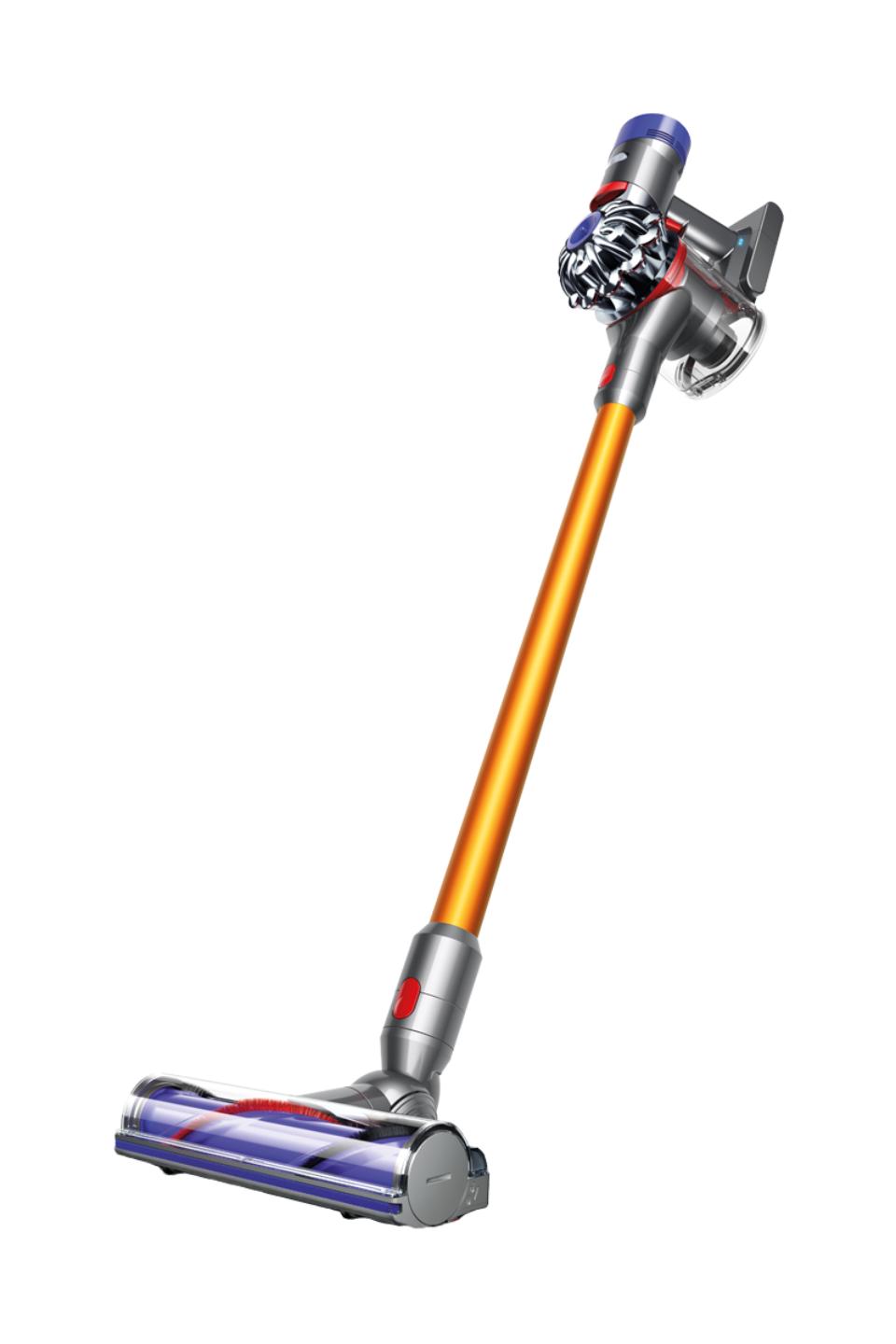Shark ION Robotic Vacuum Wi-Fi Connected, Works with Alexa, Multi-Surface Cleaning (RV750)
Tri-Brush System combines side brushes, channel brushes, and a multi-surface brushroll to handle debris on all surfaces. Shark ION Robot senses ledges and stairs, avoids damaging furniture and walls, and maneuvers around potential stuck situations, truly knowing your home. SharkClean app lets you start and stop cleaning and schedule your robot to clean whenever you want.
The Shark ION Robot is designed with a Tri-Brush System, combining side brushes, channel brushes, and a multi-surface brushroll to handle debris on all surfaces, corners, and edges. Use the SharkClean app or voice control with Alexa or Google Assistant to start cleaning from anywhere.
PRODUCT FEATURES
- THREE BRUSH TYPES. ONE POWERFUL CLEAN: Tri-Brush System combines side brushes, channel brushes, and a multi-surface brushroll to handle debris on all surfaces.
- COMPLETELY INTEGRATED IN YOUR HOME: Shark ION Robot senses ledges and stairs, avoids damaging furniture and walls, and maneuvers around potential stuck situations, truly knowing your home
- CLEAN FROM YOUR PHONE: SharkClean app lets you start and stop cleaning and schedule your robot to clean whenever you want.
- EASY VOICE CONTROL: Use Amazon Alexa or Google Assistant to easily make the robot clean at your command in your connected home.
- BUILT, TESTED, AND PERFECTED: Shark puts their robots through rigorous testing, performing thousands of hours of real-life use to give you a reliable, ultra-powerful clean.
WHAT’S INCLUDED
- Shark Ion robot
- Lithium-ion battery
- Charging dock
- 8-ft. of botboundary
- 2 side brushes
- 1 filter
PRODUCT DETAILS
- 2.6″H x 12.6″W x 12.6″D
- Weight: 5.51 lbs.
- Dust bin capacity: 0.4-qts.
- Cleaning path width: 11-in.
- Manufacturer’s 1-year limited warranty.
- For warranty information please click here
- Model no. RV750
Additional information
| Dimensions | 2.6"H x 12.6"W x 12.6"D |
|---|---|
| Weight | 5.51 lbs. |
| Dust bin capacity | 0.4-qts. |
| Cleaning path width | 11-in. |






by Brainerd
Named her Hazel and told my husband he’d go before her
by Nicole
Got my boyfriend this for his apartment, even though he insisted he didn’t need/ want it because he already had a vacuum. WELL…3 weeks later, he is so happy with Roberto. Yes, he named it! I don’t blame him, I call mine Sharky!
by Chris
I have been using one for 2+ years, still going. I bought more as client gifts. I am a realtor & that it makes a nice thank you gift.
by Lisa
It is wonderful to leave this going as I leave for work and come home to nice, clean floors!
by Dona
Have had this robot, for at least 2 months. All wood floors and a dog that sheds. Works super well. I do have to clean the bin every use. I run it about every other day….lift up the chairs and move small furniture items. It does a great job and I highly recommend it, especially for the price!
by Brian
I have had my Shark for almost a week. I have it scheduled to run each day at 1pm. My husband and I both work full time, have a cat, and a 12 month old little boy. This has helped make my life so much simpler. My only complaints are that it gets caught easily, it has run up on top of a bouncy ball and got tangled in a bed skirt. The machine does shut down if it is caught though. It is so nice to come home to a clean floor!